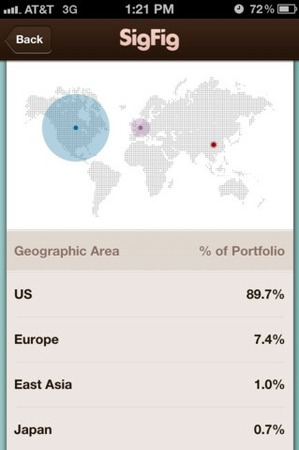 I put my name on the list for PayPal Here (its response to Square) when it was announced in the spring. Yesterday, I received my invitation to “apply” for the service.
I put my name on the list for PayPal Here (its response to Square) when it was announced in the spring. Yesterday, I received my invitation to “apply” for the service.
I was a little surprised that I still had to apply given that I’ve had this PayPal account since 1999, and have run many thousands of dollars through it, both as a buyer and a merchant. But I understand the enormous risks in payment acceptance, so I will happily oblige some hassle.
Interestingly, the process must be done via the mobile PayPal Here app. You cannot simply complete the application via PayPal’s normal online system. Again, this is slightly inconvenient for me, but it’s good to see PayPal enabling the mobile app for signup. This may be the first financial product from a major U.S. company that has a mobile-only app process.
The mobile signup process is a little confusing. First, you must download the separate PayPal Here app (it in not integrated with the regular PayPal app). Then when launched, if you press “register” on the opening screen (screenshot below), instead of being allowed to register, you are asked to put yourself on the PayPal Here waitlist
I thought I’d hit a dead end, so I went back to the invitation email (below). What you must do instead is login to the app with your PayPal credentials (note 1). Once in, users go through a quick account verification, then a merchants services mini-application, and ID check against credit bureau data.
At the end of the process, a reader is mailed to your business address and an optional debit card is mailed to your primary address on file. But you are immediately allowed to begin accepting payments through by scanning a card with the mobile camera or keying it in. That’s impressive.
The next day, I received an email with a tracking number for the reader (screenshot below).
Bottom line: The process seemed a little convoluted for an existing customer. But, in all it took 4 to 5 minutes and required no supporting info and I was able to accept a credit card immediately. Had I not had trouble logging in, I could have completed it in closer under 3 minutes. Overall, I score it a B+.
—————————————-
Email to apply for PayPal Here (26 June 2012)

PayPal Here login screen
Note: Invited users must login, NOT try to register (which won’t work)

Pre-populated account Card reader
verification confirmation screen


Confirmation email the next day (28 June 2012)

————————–
Note:
1. The email said to login with my PayPal email address and password. I got an odd error message doing that, saying to “append my code to the password.” I think this is because I have second factor authentication turned on for my PayPal account. But I could not see any way to get a code sent to me through the PayPal Here app, so I was stuck. I then tried logging in with my PayPal mobile credentials, and that worked fine. It seems like there might be a bug here.






















